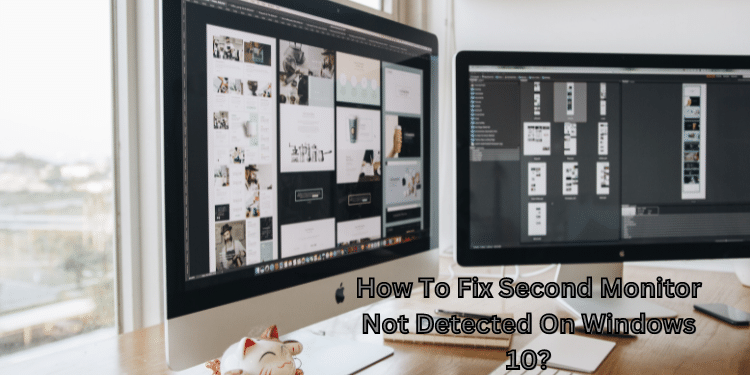A second monitor can significantly increase your productivity by allowing you to work on many projects simultaneously. Occasionally, Windows 10 cannot recognize a second monitor, leaving you with a single display. This can be annoying, but there are several solutions to solve this issue. This article contains a step-by-step guideline on fixing the second monitor not detected on Windows 10.
Examine The Connections
Check the connections between your computer and the second display as your first step. Ensure that the cable is firmly connected to the monitor and the computer. If you use an HDMI cable, try a different one, as cables can often become faulty or broken.
Update Your Graphics Card Driver
Outdated or malfunctioning drivers for the graphics card may bring on the inability to detect a second monitor. To update the driver for your graphics card, visit the manufacturer’s website and download the most recent driver. Install the driver after downloading it, then restart your machine.
Examine Display Options
Occasionally, the second monitor may be identified but not designated as the primary display. To verify this, right-click the desktop and choose “Display settings.”
Make sure “Expand desktop” is selected from beneath “Multiple displays” By hitting the “Identify” button, you can also choose a specific monitor as the primary display.
Check Display Settings
Certain monitors require specific configurations to function with a computer. Verify that the display is set to the correct input and that all drivers and software are installed.
Restart Microsoft Windows Explorer
Restarting Windows Explorer may resolve the problem if the second monitor was previously recognized but is no longer operational; restarting Windows Explorer may resolve the issue.
For that, open the Task Manager, press the Ctrl + Shift + Esc, and locate “Windows Explorer” under the “Processes” tab. Finally, from the right-click menu, select “Restart.”
Reinstall The Monitor
If none of the above solutions works, the monitor may need reinstalling. Search for “Device Management” in the Start menu to accomplish this. In “Monitors,” right-click the malfunctioning monitor and choose “Uninstall device.” Windows 10 should automatically reinstall the monitor upon system restart.
Examine Windows Updates
Windows upgrades can sometimes resolve issues with identifying a second monitor. To check for the updates, select “Update & Security” under “Settings.” Click the “Check for updates” within “Windows Update” Install any available updates, then restart your computer.
Check For The Compatibility Of The Hardware
If none of the above solutions works, your computer or monitor may not be compatible with a second monitor. Check the manufacturer’s website for compatibility details, and if necessary, consider upgrading your gear.
FAQs:
Why does Windows 10 not detect my second monitor?
A: Your second monitor may not be detected on Windows 10 for a variety of reasons, including faulty connections, outdated or corrupt graphics card drivers, wrong display settings, monitor settings, or hardware compatibility issues.
How do I remedy Windows 10’s inability to identify a second monitor?
A: To resolve a second monitor not being detected on Windows 10, check the connections, update the graphics card drivers, check the display and monitor settings, restart Windows Explorer, reinstall the monitor, check for Windows updates, and verify the monitor’s hardware compatibility.
Conclusion
Windows 10’s inability to identify a second monitor might be frustrating. A second monitor can be a tremendous benefit for productivity. It is essential to verify the connections, update the drivers for the graphics card, adjust the display and monitor settings, and then restart Windows Explorer.
Consider reinstalling the monitor, checking for Windows updates, or verifying hardware compatibility if these methods do not work. By following these methods, you can get a second monitor working on Windows 10.

